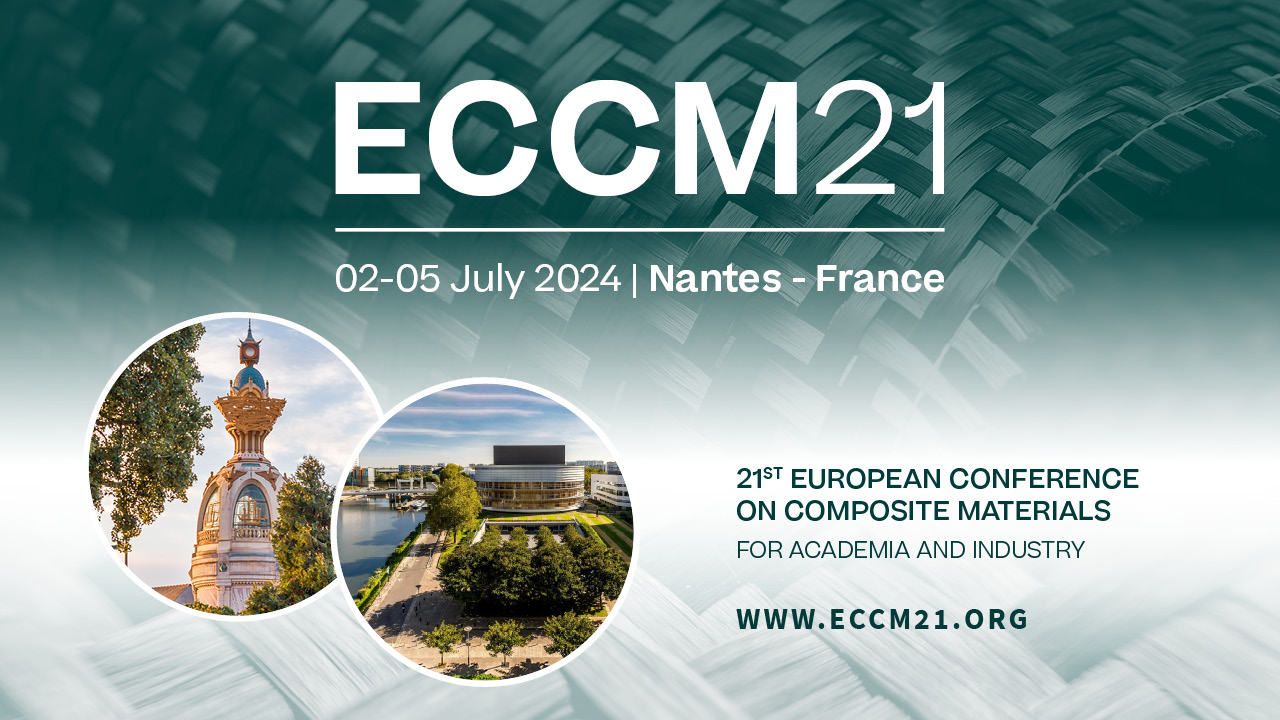INFLUENCE OF STEERING EFFECTS ON THE MECHANICAL PERFORMANCE IN FIBER PLACEMENT LAMINATES
Topic(s) : Manufacturing
Co-authors :
Julian SCHUSTER (GERMANY), Kevin SCHEITERLEIN (GERMANY), Dr.Klaus DRECHSLER (GERMANY)Abstract :
Automated Fiber Placement (AFP) is a state-of-the-art manufacturing process widely used in the aerospace industry especially for structural applications with high geometrical complexity and requirements on mechanical properties. In addition to its near-net shape fiber deposition capability, AFP technology is particularly suitable for these challenges due to its ability to place tows along curved paths, known as "fiber steering". Rendering load path optimized fiber architecture possible, fiber steering acts as a technology enabler to allow for complex design approaches with a highly automated and accurate manufacturing technology.
Compared to following a geodesic path, curved path layup results in mechanically downgrading effects. These effects are caused mainly by in-plane undulation of fibers, resulting in microscopic angular deviations and discontinuities. Furthermore out-of-plane undulations, observable as wrinkles in the layup, may induce undulations in adjacent layers and thus increase the deteriorating effect on the mechanical performance of the structure. Other process induced defects typical for AFP are discontinuities in the fiber architecture, caused by geometrically conditioned triangle gaps / overlaps, and macroscopic angular deviations in the actual layup path.
By tolerating higher values of one or two of these defects, the remaining defect causes can be limited to fit within design allowables. In order to estimate a reasonable weighting of downgrading defects and thus enabling the manufacturing of designs that can fully utilize the achievable mechanical performance, investigating on the mechanical properties of fiber steering shows to be an important aspect of AFP manufacturing engineering.
This study experimentally investigates this impact by means of tensile and ILSS testing of steered laminates. Starting off with an evaluation of the steering capabilities of the prepreg material used in the study at hand, a set of radii to be analyzed is defined. To provide traceable quantification of the steering effects affecting the surface integrity, an online inspection system is employed. With the previously determined radii in mind, a new design for tensile specimen meant to isolate the steering induced defects, derived from the DIN ISO 527-4:2020, is being proposed and investigated. The laminates are manufactured using an 8x1/4’’ AFP machine. In addition to test specimen with curved fiber paths, a reference laminate containing only straight fibers is produced and tested to determine the maximum possible strength as a comparison for the steering specimen.
The objective of this study is to gain a deeper understanding of the correlation between steering-induced effects and mechanical behavior. This understanding will help determine assessment criteria for designing structures optimized towards the requirements of the AFP process, thereby unlocking a new level of lightweight design methodology.
Compared to following a geodesic path, curved path layup results in mechanically downgrading effects. These effects are caused mainly by in-plane undulation of fibers, resulting in microscopic angular deviations and discontinuities. Furthermore out-of-plane undulations, observable as wrinkles in the layup, may induce undulations in adjacent layers and thus increase the deteriorating effect on the mechanical performance of the structure. Other process induced defects typical for AFP are discontinuities in the fiber architecture, caused by geometrically conditioned triangle gaps / overlaps, and macroscopic angular deviations in the actual layup path.
By tolerating higher values of one or two of these defects, the remaining defect causes can be limited to fit within design allowables. In order to estimate a reasonable weighting of downgrading defects and thus enabling the manufacturing of designs that can fully utilize the achievable mechanical performance, investigating on the mechanical properties of fiber steering shows to be an important aspect of AFP manufacturing engineering.
This study experimentally investigates this impact by means of tensile and ILSS testing of steered laminates. Starting off with an evaluation of the steering capabilities of the prepreg material used in the study at hand, a set of radii to be analyzed is defined. To provide traceable quantification of the steering effects affecting the surface integrity, an online inspection system is employed. With the previously determined radii in mind, a new design for tensile specimen meant to isolate the steering induced defects, derived from the DIN ISO 527-4:2020, is being proposed and investigated. The laminates are manufactured using an 8x1/4’’ AFP machine. In addition to test specimen with curved fiber paths, a reference laminate containing only straight fibers is produced and tested to determine the maximum possible strength as a comparison for the steering specimen.
The objective of this study is to gain a deeper understanding of the correlation between steering-induced effects and mechanical behavior. This understanding will help determine assessment criteria for designing structures optimized towards the requirements of the AFP process, thereby unlocking a new level of lightweight design methodology.

